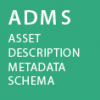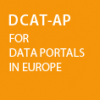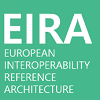Recommendation 5 | Principle 3: Transparency
Ensure internal visibility and provide external interfaces for European public services.
Solutions
| List of all available solutions that implement this recommendation |
|---|

|
ADMS can be used to improve indexing and visibility of own assets. |

|
Context Broker provides a transparent interface (API) so that organisations can integrate data from multiple systems, creating a holistic view of information. |

|
Reusing the CPSV-AP will help public administrations to put together interoperable and machine-readable Catalogues of Public Services, hence giving internal visibility to its resources as well as providing an external interface. |

|
The DCAT-AP for data portals allows the sharing of data and interconnection between national data portals and also with the EU data portal, hence ensuring external visibility of resources. |

|
The use of EIIRA Architecture Building Blocks helps to ensure solution owners internal visibility and enables them to provide external interfaces for European public services. |

|
EULF Blueprint Recommendation 2 recommends a prominent role for location information in national open data policy and implementation. EULF Blueprint Recommendations 3 spells out the requirements for transparency in how personal data is used. |

|
The Reference Architecture is structured in such a way that it gives internal visibility to eDocuments and their core elements. |
|
IMAPS solution v1.2 |
Question D7 of the Service Delivery section of the IMAPS questionnaire assesses whether there is a certification procedure defined for the end-users to access the digital public service. Certification is a success factor for ensuring working interconnections and a digital public service that requires formal certification is considered more interoperable. |
|
LIMAPS v1.0.0 |
Question D5 of the Service Delivery section of the LIMAPS questionnaire assesses whether the legal behavioural interoperability specifications of data, information and knowledge delivered by the public service are clear to their end-users (legal requirements for reuse, licenses, etc.). |
|
OIMAPS solution v1.00 |
Question D7 of the Service Delivery section of the OIMAPS questionnaire assesses how a public service manifests its organisational behavioural interoperability performance towards its end-users, by assessing how user-centred and streamlined the process of the public service delivery is. To achieve this, it assesses if and to what extent the underlying business processes of the public service are manual or digitised, as well as user or automatically triggered. |
|
SIMAPS solution v1.0.0 |
Question D11 of the Service Delivery section of the SIMAPS questionnaire assesses whether the public service makes its data, information and knowledge delivered clearly understood by its end users. |
|
TIMAPS solution v1.0.0 |
Question D8 of the Service Delivery section of the TIMAPS questionnaire assesses whether the public service is adequately described so as to be easily retrieved by an end-user and/or other public services. |
|
OpenPM² |
Using the open management methodology of OpenPM² to manage project work/change in a public administration facilitates/enables visibility inside the administrative environment and warrants citizen’s checks and understanding of how the administration works, how it makes decisions, how it organises/governs its projects etc. |









